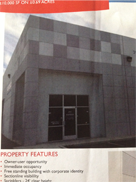My husband’s parents live on the northeast edge of the town of Sonoma, Calif., at the end of a road that leads up a hill into Bartholomew Park Winery. It is beautiful country, shaded by fragrant eucalyptus trees and crisscrossed with hiking trails. Last week, the Northern California wildfires, fueled by wind gusts of up to 40 miles per hour, set their street ablaze.
Their house, and the winery, survived. Fire crews worked day and night to prevent the inferno from racing down ridgelines to downtown Sonoma. Though some buildings burned, firefighters were able to save both Bartholomew Park and the adjacent Buena Vista Winery, the oldest commercial winery in the state, established in 1857.
Fire is a fickle thing. As I drove across Napa and Sonoma counties last week, I saw different versions of the same here-but-not-there diptych: a burned-out husk of a home or car, and, just next door, an expanse of untouched vineyards. Much was wind-dependent. Dozens of wineries sustained damage across Napa, Sonoma and Mendocino counties; some, like Signorello Estate, off the Silverado Trail in Napa, and Paradise Ridge Winery, in Sonoma County’s Santa Rosa, were completely destroyed. Their owners have vowed to rebuild.
As of this Wednesday, power still had not been restored to some neighborhoods, and some were still under evacuation orders and affected by road closures. Air quality remained poor — indeed, smoke and haze were choking much of the Bay Area — though it was expected to improve in the weeks ahead. Thousands of firefighters were still working to contain the wildfires, which had already burned more than 200,000 acres and destroyed 5,700 structures, and killed more than 40 people.
How California’s Most Destructive Wildfire Spread, Hour by Hour
A map shows the origin and extent of a fire that burned 5,200 buildings in hours.
In Napa, vineyard workers were bringing in the last of the grape harvest, and wineries, tasting rooms, hotels and restaurants were starting to reopen for business. The local tourism group, Visit Napa Valley, has posted a Napa Valley Operations page on its website, with current closures. Another two dozen businesses have reported that they will back up and running by next week.
Of the tasting rooms that were open, some, like Cakebread Cellars, were donating fees to benefit fire relief. Other wineries, like HALL Wines, were matching donations to local community funds.
Cate Conniff, communications manager at Napa Valley Vintners, a trade association, said that of the 330 member wineries that responded to outreach — including wineries in severely affected areas like Atlas Peak, Calistoga and Mt. Veeder — fewer than 50 reported direct property damage. About 90 percent of the grapes by volume had been picked before the fires began. Wine inventories from previous vintages, she added, were in pretty good shape. “We’re beginning to move toward the next phase, of recovery,” she said. “Our livelihood depends on it.”
The fires burned more than just vineyards. The upper part of Napa’s 850-acre Skyline Wilderness Park was charred, and small fires were still active on Tuesday. The steep slopes of Robert Louis Stevenson State Park, in Napa, Sonoma and Lake counties, meant that firefighters had trouble creating a fire break; a large swath of the park burned. In Sonoma, Jack London State Historic Park, Sugarloaf Ridge State Park and Trione-Annadel State Park are all closed until further notice.
In Santa Rosa, the worst of the fires ravaged several neighborhoods and threatened the Safari West Wildlife Preserve and its 1,000 animals, which include rhinoceroses, hyenas and cheetahs. Peter Lang, the preserve’s owner, spent the first night of the wildfires putting out spot fires and spraying down the preserve perimeter to save his animals, even as his own home burned. The staff is currently making repairs to the property, and tentatively expects tours and activities to resume in November, and the lodge to reopen for overnight guests in March.
Like others who are heavily dependent on tourism, Catherine Bartolomei, who owns and runs the Farmhouse Inn in Forestville, 10 miles west of Santa Rosa, is anxious about the loss of visitors.
“Last week half my staff was evacuated, two of them lost their homes, and my parents stayed in a shelter,” Ms. Bartolomei said. “My kids were making food for firefighters. And then, when the fire danger passed here, we did two weddings on Saturday, when it was a beautiful day” — all while fires were licking the edge of the town of Sonoma.
“It’s so odd. Kind of like Nero fiddling while Rome burned,” she said. “But we need people to come back. Come and eat and drink with us. We need you.”
In Sonoma’s historic downtown plaza, restaurants and bars were reopening, though with limited menus and unreliable phone service. Last week, when the plaza was all but deserted, someone had placed a white particulate mask on a recently installed bronze statue of General Mariano Guadalupe Vallejo, a 19th-century military commander, sitting on a park bench. Taped on the seat next to him was a printed sign: “The Love in the Air Is Thicker Than the Smoke.” It ended with a hashtag: #SONOMAPROUD.
Half a block away, the Sonoma Valley Museum of Art was still closed, but planned to host an open house to celebrate its two new exhibitions on Saturday afternoon. “As a gesture to our community, exhibition admission will be free to the public for the rest of the year,” said Linda Keaton, the museum’s executive director.
Other venues will reopen in the coming weeks and months. In Napa, Meadowood, the celebrated inn and restaurant, partially reopened on Thursday (the restaurant didn’t have enough diners to open, but they expect it to this weekend), and Auberge du Soleil, the Michelin-starred restaurant and hotel, was slated to do so on Friday.
At the Girl & the Fig, a 20-year-old restaurant on the plaza, customers on Tuesday evening were mostly locals, happy for a little normalcy. “I am more proud today to live in Sonoma with this community than I have ever been,” said Sondra Bernstein, the restaurant’s owner. She spent the previous week getting hundreds of meals out to firefighters, police, emergency medical workers and evacuation shelters, in partnership with the local Rotary Club. Three of her staff lost their homes.
“We’ve had so many cancellations, we don’t know the impact yet,” she said. “But everybody is in this to get back as quick as we can, and to support each other’s businesses right now. The winemakers I’m talking to are still really hopeful for a good season.”
At the opposite corner of the plaza, Saul Gropman of the intimate, 36-seat Cafe La Haye was writing a menu for the evening’s reopening. “There are so many people who want to do something,” he said. “The most important thing we can do is to tell people we’re open, we’re here. And we want them to come.”









